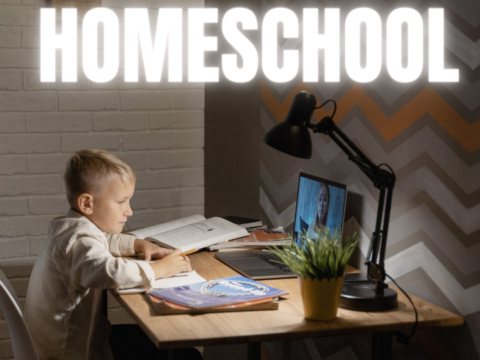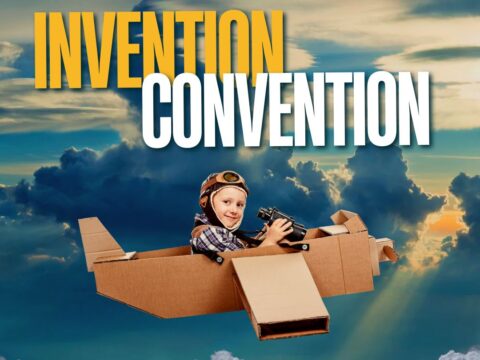Getting ready for extra time with kids? Here are five great ideas that are energizing and motivating:
5 Fun Science Experiments Kids Can Do at Home
 All children are born scientists. Until education – or spoilsport parents – ruins them.
All children are born scientists. Until education – or spoilsport parents – ruins them.
Kids have a natural curiosity that is insatiable due to their innate ability to get to the bottom of anything they set their minds on. Be it blowing soap bubbles or building towers of spaghetti, they are second only to seasoned engineers and CEOs at getting results.
However, over the past few months, kids have largely been cooped up at home due to the impact of COVID-19; the lack of access to a tried-and-true schooling process and resources will result in young children missing out on foundational concepts in literature, math and science that prepare them for a lifetime of learning and working.
Virtual schooling is clearly not an effective solution, according to a study done by the National Alliance for Public Charter Schools (NAPCS), which looked at schools specifically designed to teach coursework online with significant budgets invested in research and planning. “If they can’t make it work, it seems unlikely that parents and teachers Googling resources will do any better,” said Eric Hanushek, economist and education researcher at Stanford.
Well, don’t let that deter you. As a STEM (Science Technology Engineering Mathematics) learning advocate for kids, I can’t understate the importance of teaching simple scientific and number concepts at home, because science isn’t something you learn only in a classroom. Research shows that kids as young as pre-school or kindergarten age have divergent thinking capabilities. Trying out simple experiments with things found in and around the house can improve their critical reasoning as well as spatial skills, and promote a curiosity-mindset that they’ll carry well into adulthood.
So, here are some fun activities and easy DIY projects to get your kids excited about science. Before you let them dive right in, please make sure all experiments are done under adult supervision.
1 Naked Egg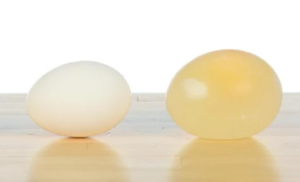
Let’s start with a simple one. Eggs are one of the favorite props in many kiddies’ experiments (and recipes).
What you’ll need:
- 2 eggs
- Water
- Vinegar
- 2 glasses
How to do it:
- Fill one glass – a little more than half – with vinegar and the other with water.
- Dip one egg in each until the eggs are completely submerged.
- Let them soak for 24 hours and remove them the next day.
What happens:
As time passes, you’ll see bubbles form on the surface of the vinegar egg. At the end of 24 hours, you’ll find that the egg that was in the vinegar completely loses its shell and becomes “naked.” It’ll also be significantly larger in size than the one you kept in water.
The science behind it:
This demonstrates a principle called “osmosis.” The vinegar is made up of two parts: acetic acid and water. The acetic acid reacted with the eggshell and dissolved it. The water traveled through the egg’s membrane in such a way that the concentration of water on both sides of the membrane becomes equal. This “flow” is called osmosis.
Great link:
https://www.stevespanglerscience.com/lab/experiments/growing-and-shrinking-egg/
2 Diet Coke Eruption
Warning: This might make your clothes and/or your kitchen messy. So try this outdoors.
What you’ll need:
- A packet of Mentos
- A large bottle of Diet Coke (Soda or any carbonated drink will do as a substitute)
- A test tube or paper roll to hold the Mentos loosely
- A small paper card
How to do it:
- Go out on the yard or the garden and select a place where there isn’t much of anything around for 6 to 8 feet. Place the Diet Coke on a table or on the ground.
- Stack 7 Mentos just like they are in the packing, but in a way they can fall out easily. Use a paper roll or test tube.
- Open the Diet Coke slowly so that it doesn’t fizz out.
- Cover the test tube with a little paper card and invert it over the mouth of the bottle.
- Pull out the paper card, letting the Mentos fall into the bottle quickly.
- Move back quickly from the bottle without turning your back to it (or else you’ll miss the sight).
What happens:
https://www.youtube.com/watch?v=rlSMNQ5K51
The Diet Coke blasts up in a sky high – okay, not-so-high – explosion. But it’s a veritable fountain of the sticky stuff.
The science behind it:
The carbon dioxide (CO2) in the soda is what makes it bubbly. It’s mixed into the fizzy drink when they make it at the factory. Diet Coke rises higher probably because of some of its ingredients, and it is less sticky because of whatever sugar substitute it uses.
Now, the CO2 isn’t released from the drink until you pour it, or shake the bottle, or let it lie for a lot of days. It’s just waiting – raring, rather – to escape in the form of bubbles. Shaking the bottle or dropping something into it breaks the surface tension of the liquid and allows bubbles to form on the surface. Mentos have very tiny pits on them like a golf ball, which means the surface area increases dramatically, making space for a real lot of bubbles to form.
Experiments have proved that 7 to 8 pieces of Mentos are good enough. The world record height of the blast is about 29 feet.
3 Double Color Flower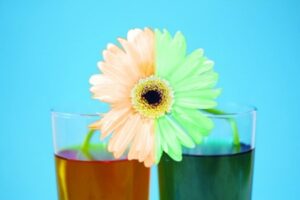
Magic happens when you combine science and art. The super-creative overlap between STEM and the arts is known as STEAM. Here’s an experiment that falls into this category.
What you’ll need:
- A couple of flowers (preferably white) with a clean and thin but sturdy stem.
- Water
- Food coloring
- 2 glasses or vases
- A knife
How to do it:
- Get a couple of flowers. White flowers such as carnations work best because the color change happens quickly, but you can get daisies, roses or any moderately big flower you can find.
- Fill the glasses with clean water. Add different food coloring to each. Make the colors strong. We use food coloring instead of paint so that the plants get non-toxic water.
- Grown-up help alert! Slit the stem vertically from the bottom in two equal parts the roughly length of the glasses.
- Part the stem carefully and place one half each into the two glasses.
- Place the split flower and glasses in a cool, dry place away from direct sunlight.
What happens:
You will start to see the flower change color in a few hours. It might take anywhere from a day to three for a significant difference in color, depending on the flower you choose, the weather, and the place where you keep it.
The science behind it:
The stem of a plant has tube-like transport tissues called xylem. The water is sucked up the stem and moves to the leaves and flowers, from where it evaporates via little openings called stomata. The evaporation creates pressure for more water to be sucked up through the stem, pretty much like drinking water with a straw. The whole process is called transpiration. The speed of transpiration depends on the temperature, wind, light and humidity.
Great links:
https://redtri.com/simple-science-experiments-with-5-supplies-or-less/slide/4
Science Experiments with Water
Science Activities with Plants
4 Extra Strong Paper Cups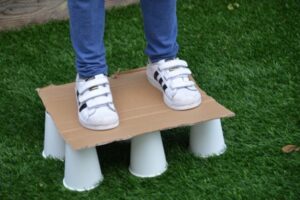
There are loads of things we take for granted in everyday life. The most unassuming of objects can prove otherwise.
What you’ll need:
- 2 dozen paper cups
- 2 sheets of strong cardboard
How to do it:
- Place 2 cups inverted on the floor side by side. Stand with one leg on each and see them get crushed. Just for the fun of it.
- Arrange 12 cups inverted and evenly spaced out in a grid of 4 x 3 on the floor.
- Place a cardboard sheet on top of the grid.
- Kids only please! Gingerly stand on top of the cardboard sheet.
- If it doesn’t break, place another layer of cups and the second cardboard sheet over this layer. Step up on top!
What happens:
The paper cup structure holds up. Likely, the structure with two floors holds up just as well.
What happens:
When you place many cups side by side, your weight is distributed across all of them by the cardboard sheet. Each cup has to bear just a fraction of your weight. The minimum number of cups needed to support your weight depends on the size and quality of the cups and, well, your weight.
Great link:
https://www.science-sparks.com/how-can-you-stand-on-a-paper-cup-without-breaking-it/
5 Oobleck
What state is toothpaste or jelly – solid or liquid? Turns out, they’re colloids. Oobleck is
What you’ll need:
- 2 cups corn starch
- 1 cup water
- Food coloring
How to do it:
- Take water in a bowl.
- Add the food color.
- Add 1.5 cups corn starch to it. Mix with a spoon at first.
- Slowly add the rest of the corn starch. As the consistency of the mixture strengthens, knead with your hands.
What happens:
https://www.youtube.com/watch?v=nw8KaHglokQ
You get a gooey, slimy mixture that was termed “Oobleck” in the Dr. Seuss book Bartholomew and the Oobleck. When you knead the mixture or tap its surface, it feels hard. But when you dip your hand inside slowly, your fingers slide through it as if it’s water. This is exactly how quicksand works.
The science behind it:
Oobleck is a “non-Newtonian” fluid – it acts like a liquid when it’s being poured (this property is called viscosity) and like a solid when a force (in this case, pressure) is acting on it. Some of its properties:
- When you roll Oobleck into a ball, it solidifies. But when you stop moving it, it melts back in your hand.
- It is messy but can be washed away completely with soap and hot water.
- When left in the open for too long, it hardens and turns back into cornstarch.
- It isn’t poisonous, but tastes awful.
- Make enough Oobleck in a large tub or bin and you can walk on it.
Over to You
What do you think of these experiments? Which ones are you going to try right away?
While parents certainly can’t match the school’s resources and expertise in imparting science and technology education to eager little minds, there’s quite a bit we can do to grow the next Einstein (or Musk) at home. If you have a bit of extra space and a stuff lying around, why not try and build a science lab at home for the budding genius?
AUTHOR BIO:
Shreiya Aggarwal-Gupta is the owner of the early education startup Kidpillar, which aims to provide developmental opportunities and resources for young children in the field of STEM (Science Technology Engineering Mathematics) via kid-friendly journals, practical DIY-kits, and simple project-based learnings and workshops. Shreiya is also a passionate blogger, computer science engineer, finance whiz, and “perfect mommy” to her son.
@KidPillar
More science
In Love with Space? Here are Great Websites to Take You There
Ward’s Science–So Many STEM Resources
PASCO Motion Sensor–A Must for Science Classes
Jacqui Murray has been teaching K-18 technology for 30 years. She is the editor/author of over a hundred tech ed resources including a K-12 technology curriculum, K-8 keyboard curriculum, K-8 Digital Citizenship curriculum. She is an adjunct professor in tech ed, Master Teacher, webmaster for four blogs, an Amazon Vine Voice, CSTA presentation reviewer, freelance journalist on tech ed topics, contributor to NEA Today, and author of the tech thrillers, To Hunt a Sub and Twenty-four Days. You can find her resources at Structured Learning.



